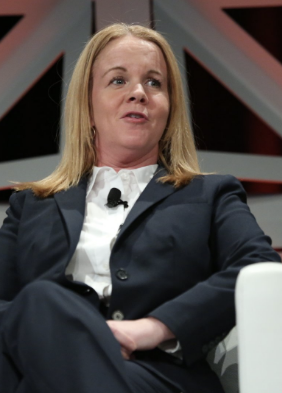 Before taking advantage of their first-party data, brands first must figure out what the heck they’ve actually got.
Before taking advantage of their first-party data, brands first must figure out what the heck they’ve actually got.
“People don’t really appreciate the assets they’ve accumulated over the course of years,” said Acxiom vet Josh Herman, who now leads tech development for CRM, ad tech and analytics platforms at Kimberly-Clark Corp. He spoke at AdExchanger’s Programmatic I/O show in New York City on Thursday.
A large TV network that approached Acxiom during Herman’s tenure at Acxiom/K-C, for example, was sitting on around 40 million first-party consumer relationships without even realizing it.
And that data was “largely going unmanaged across their offering,” Herman said.
It usually takes an internal evangelist on the client side who sees the value in applying first-party data to get the ball rolling with the higher-ups, said Bridget Bidlack, VP of global product at Experian Marketing Services, and that person has their work cut out for them.
“Often the way that an organization is set up is in silos,” she said. “They’re used to measuring just their channel … so from channel by channel they can see efficiency, but they’re not looking end to end what the ROI is. It does sometimes seem like a daunting task to look at legacy systems that have been around for 10 to 15 years – how do you actually connect all of that data?”
Which is why whoever’s spearheading the effort needs to build what Ensighten CTO Josh Goodwin called “political capital” within their company.
The process of uploading CRM data into a digital marketing cloud, for example, can be difficult and take some time. So, rather than starting out with a complex project, Goodwin advises clients to take on a more manageable task at the beginning, like unifying their on-site analytics with their off-site advertising for quicker results early on.
“Doing [attribution] with first-party data makes it much, much easier to accomplish – it’s a project you can, two weeks into it, start showing some ROI,” Goodwin said. “Once you’ve done that, then you’ve built some of the political capital it takes to go to the various databases within your organization and ask them to do the important work of unifying the databases and getting them associated with users on your site.”
Ultimately, he said, the technology isn’t the hardest part. It’s “the management and the politics” that typically act as a roadblock, Goodwin said.
But Herman, a self-described evangelist for first-party data usage within Kimberly-Clark, begs to differ: It’s not productive to treat first-party data activation like it’s stressful and laborious or like it’s uncharted territory.
“The fact of the matter is that the deployment of first-party data has a proven ROI that’s, oh, about a half-century old,” Herman said. “If you strip all the digital varnish off this process, these are the principles of direct marketing that have proven themselves, and very successfully. What’s new and exciting is all of the technology that allows us to employ these assets across a multitude of channels [and to consistently measure ROI].”
Before getting buy-in, though, there’s the little matter of justifying the cost. Merging databases and forging ahead with a first-party data activation strategy isn’t cheap – and reach isn’t guaranteed.
“Everyone loves their own data, everyone thinks they have the very best, but there is only so much reach, especially for a CPG company, where we do have a pretty strong first-party consumer data asset, but that gets exhausted in terms of reach,” Herman said. “And then the question is, what next?”
Of course there are a number of different techniques to employ, like third-party data and lookalike modeling. But with each of those methods comes a “gradation of confidence,” Herman said.
“There is a ratio between confidence, accuracy and cost,” he said. “[But] as long as you’re thoughtful about what you can expect and what you’re willing to pay,” it’s possible to “defend the spend.”














